The chenille technique appeared relatively recently, but has already become a favorite among many needlewomen. Clothes and bed linen made in it are very popular. This article tells about the chenille technique, what it is and how to work with it, and also presents several master classes.
What is chenille
Chenille is a fluffy fabric that appeared relatively recently. It is obtained by sewing together many layers of material with parallel seams on an overlock machine and then cutting the upper layers between the rows.
It is advisable to use this technique when sewing jackets, cardigans, jumpers, bags, blankets, bedspreads and more.
Description of product layers:

- The base layer may look like a thick fabric or thin calico, but you need to understand that with a soft base layer, heavy fringe may look ugly and untidy. For the base layer, it is better to take synthetics, not natural materials;
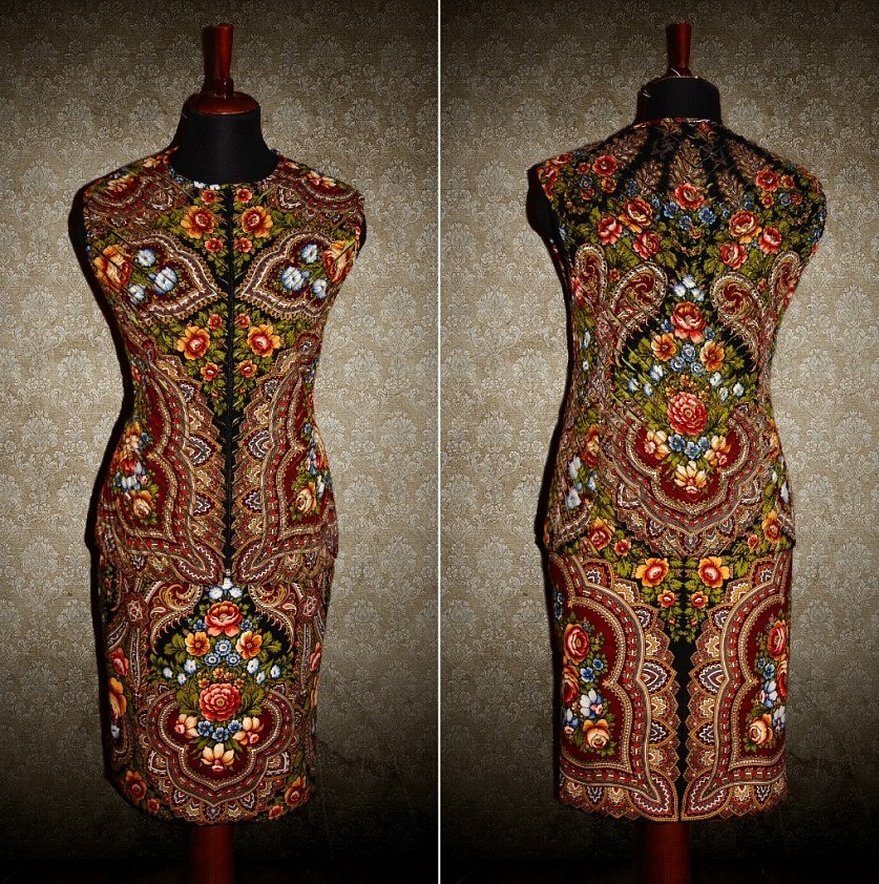
- The middle one — the filler — can be made in the form of 3-6 fabric panels similar in composition. Their colors should match, smooth layers or bright contrast look great. Basically, thin cotton fabric is used as a filler, but dense materials are also possible. Knitwear is not used very often — it does not have the structure that gives a beautiful fringe.
- The last layer of the product is considered the most basic. Its appearance affects the color of the middle layers, emphasizes the depth of color. Products made of thin silk, colored chintz, printed cotton look very beautiful.
- At the end, be sure to brush the edges with a coarse brush to fluff them up.
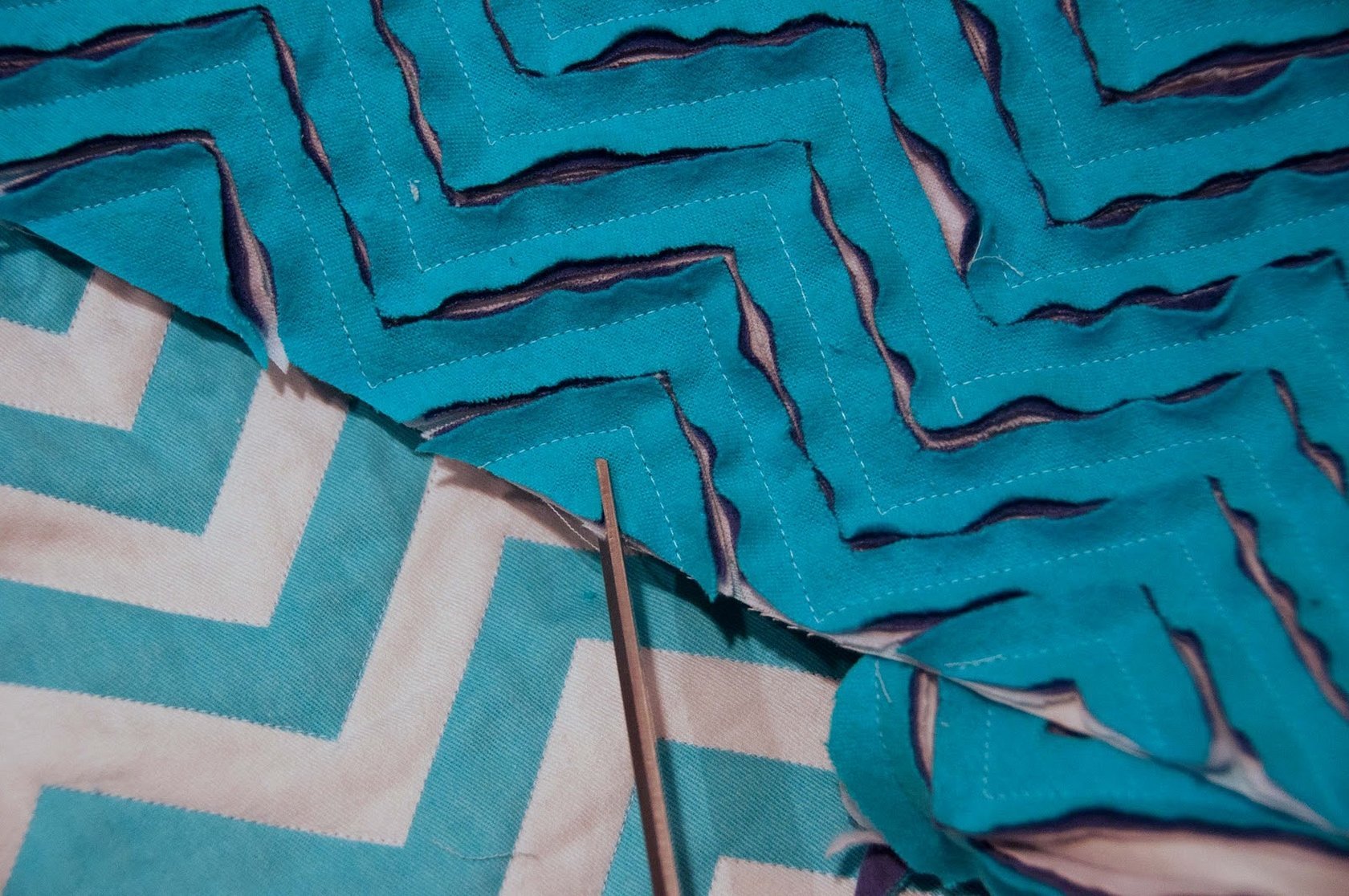
This technique can be used to create many different ideas. For example, you can use old jeans to beautifully decorate a bag with a small fringe. Making blankets and pillows using this technique is gaining popularity.
Some people make beds and houses for animals, decorating them with fringe. It is very good to make such for winter, as the layers of fabric provide additional warmth for the animal.
Attention! For beginner needlewomen, it is better to first watch several lessons and textbooks on how to do the work.
What You Should Know Before Working with Chenille
It is better to choose a light material, for example, velvet, silk or decorative velour. Also, it is advisable to take fabrics that after cutting will stick out well and look great with each other. You cannot use materials that shed a lot, otherwise the product will be ruined.

The appearance of the finished product mainly depends on the arrangement of the layers, which means on the individual wishes of the person.
The more layers there are, the denser and rougher the material will be.
There are many accessories for chenille: roller knives, templates and professional brushes. But it is not necessary to use them.
To begin work, you need to wash and dry the material well.
The stitch on the overlock machine must be set with a small stitch length.
The lines should be made at an angle of 45 or 30 degrees.
Preparatory stage
To work in this technique, you need to place the non-woven material at an angle of 45 degrees to the marking lines and use a pencil to make marks every cm. Since the material is cut at an angle of 45 degrees, it will fluff up beautifully, but not crumble.

By using their imagination, craftswomen can make different ornaments on the product. To continue the work, you need to use paper clips to pin all the layers of the material together, and pin the base with lines from the inside.
Chenille potholders
The potholders are made using the chenille patchwork technique. It appeared relatively recently and involves using fabric scraps for the product.
Step-by-step work plan:
- To make a chenille patchwork, you need to take scraps of fabric and put them together. All sides of the potholder should look good, so the bottom layer is formed from two pieces of material folded inside to inside, and the top ones should be laid like a pie with the right side out.
- It is advisable to make about 5 layers if the material is thin. In the usual case, three layers are enough.
- Sew the pieces together at a 45 degree angle. Do not work along the grain or crosswise thread. The material should fluff up after cutting, not crumble.
- Cut the top layers and use your fingers to loosen them.
- Make a braid along the edge of the mitten.
- Finally, wash the item well at 40 degrees, spinning is allowed.
Sewing pattern for a rug using the chenille technique
Making a rug this way is easier than anything else. Since the finished product will be used as a rug in the bathroom or bedroom, you need to make many layers. Using a very dense material. The thickness will be the maximum that the sewing overlock can sew.
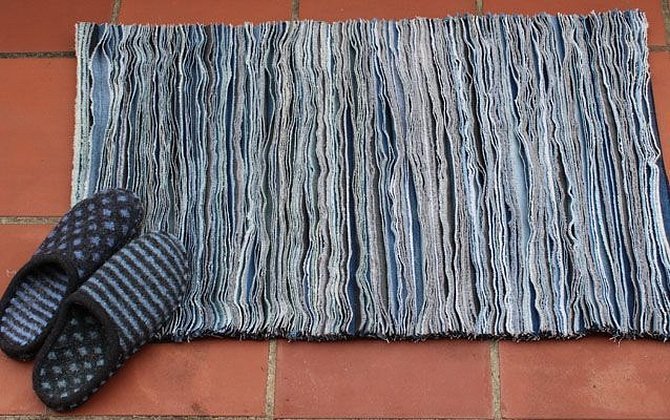
The first layer does not need to be cut, so it should be denser than the others, and then you can use patches of different colors and structures, it all depends on personal preferences. All layers should be sewn together according to the traditional pattern, and then cut with sharp scissors to the first layer and fluffed by hand. You can decorate the rug with different embroideries or emblems. If it is used as a decorative decoration of the room, you can additionally sew on some brooch or beautiful beads.
Chenille technique in clothing
To create clothing elements, materials of different colors are used, with or without a pattern. Fabrics with large or abstract ornaments look very good.
Attention! A completely amazing effect is achieved if you use Pavlovo Posad shawls as the last layer.
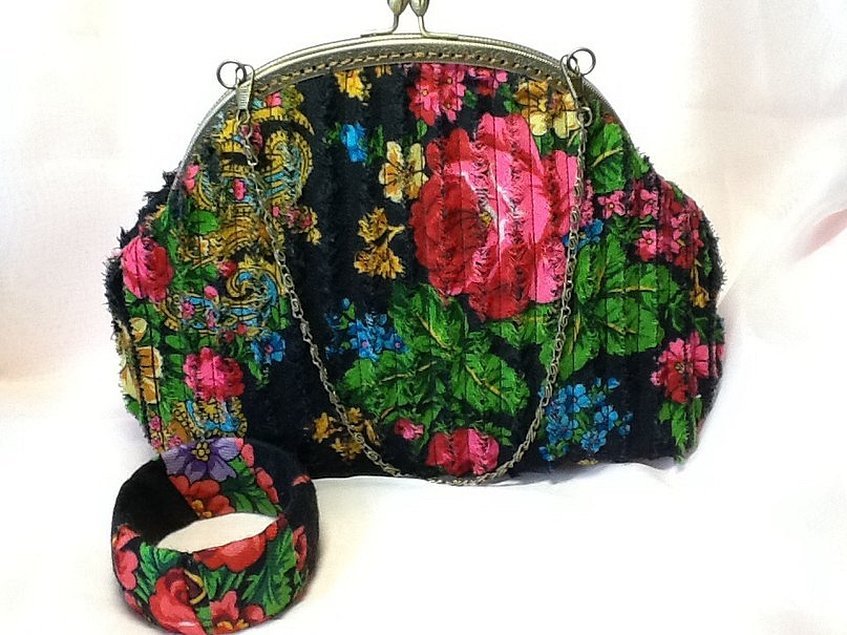
Then the product will be painted in the Russian style of the 18th century.
The choice of color of the material depends on the wishes of the person, as well as on the planned final stage. The appearance of the finished product will depend on the sequence of superimposing different shades of material on each other.
You can make very beautiful children's bed linen, blankets and pillows using this technique. It is used to decorate various toys and photo frames. Warm, winter jackets decorated with fringe along the edges are coming into fashion. Using this method, you can make dozens of different things, the main thing is to include all your creativity and imagination.

How to care for fabric
When caring for the fabric, you must follow these rules:
- Clothes made using this technique should not be washed often. It is advisable to do it by hand, or if possible, take it to the cleaners;
- The water temperature is about 45 degrees;
- You cannot dry items vertically; you can only dry them completely on a table or chair;
- Ironing the product is prohibited, as the fringe will no longer fluff up;
- It is not advisable to use aggressive detergents, as they can weigh down the fringe;
- You can store them on hangers or neatly fold them and place them in a drawer, but don’t put anything else on top.
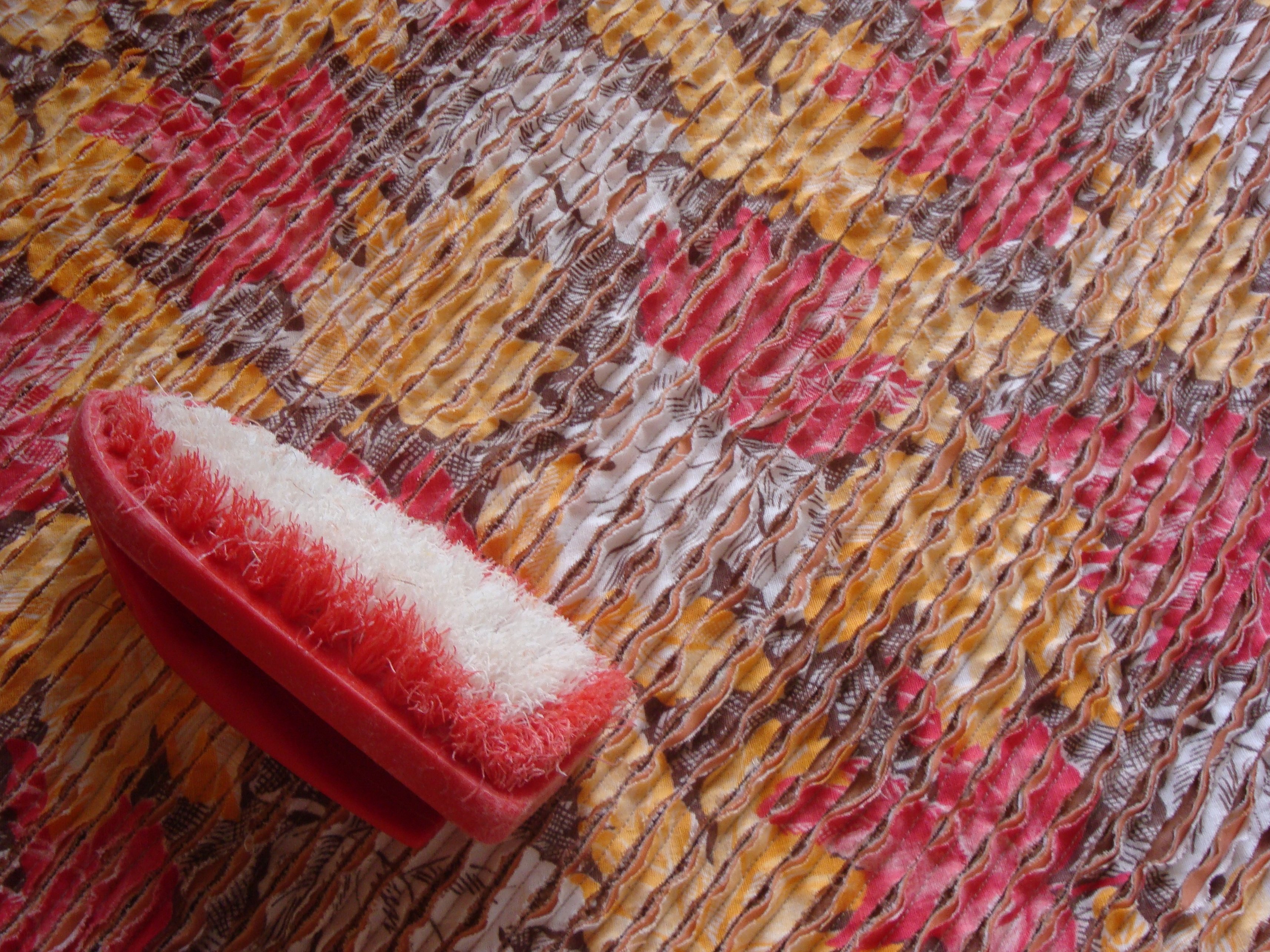
In conclusion, it should be emphasized that although the chenille technique is relatively new, many fashionistas have already appreciated clothes made in this way. At home, it will not be difficult to make a vest or jacket using this technique.




